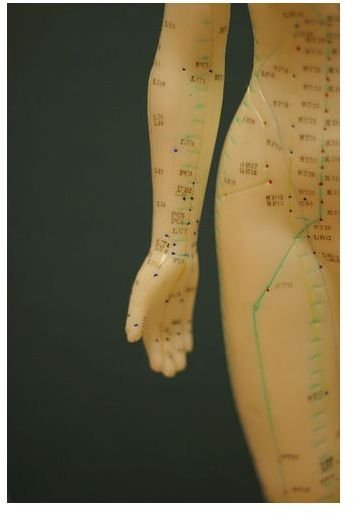How Does Acupuncture Work and What Can It Be Used For?
What is Acupuncture?
Acupuncture involves the use of some sort of stimuli such as needles, electrodes, or even finger pressure (acupressure) on points along the body. Additional techniques such as moxibustion, where Chinese herbs are burned near the points, and massage therapy may be used along with acupuncture. This form of medicine is safe as long as it is done by a trained practitioner. There are no drugs involved or harmful side effects to consider. In fact since acupuncture, like all forms of traditional Chinese medicine, attempts to heal by improving overall well-being, the use of this therapy is more likely to have positive side effects.
It is often used as a safe treatment for chronic pain. Modern scientific research also supports the use of acupuncture for protecting the body against infections and regulating physiological functions. In Chinese medicine it is used to treat numerous common health problems from chronic fatigue syndrome to the common cold. The World Health Organization supports the use of this therapy for over 100 different conditions including migraines, sinusitis, and neuralgia. How exactly does acupuncture work? What is going on in the body when acupuncture points are stimulated?
An Explanation for Acupuncture
According to traditional Chinese medicine, acupuncture works by unblocking the flow of qi, or life energy, that flows through the set of subtle energy pathways that circulate through the body known as the meridian system. Meridian points are stimulated, for example from the placement of a needle. Each point correlates to an organ or body function. When qi is able to flow freely the body is able to return to a state of wellness. When energy is blocked because of stress, injury, poor diet or other factors then the body is susceptible to disease.
While the Chinese model sufficiently explains the true potential of this form of healing Western medicine does not incorporate the intangible into its theory. Therefore subtle matter, such as qi and the meridian system itself cannot be used to explain how acupuncture works. According to Western medicine acupuncture works by stimulating nerve cells and causing the release of brain chemicals such as endorphins. Acupuncture also stimulates the release of hormones to regulate and balance bodily functions.
Research
According to the World Health Organization’s review of clinical trials acupuncture is definitely effective and has many benefits. It is very well-suited as a form of complimentary medicine as the effects are not always major or instant, but rather more subtle and long-term. It is a highly recommended treatment for pain, and is often used for cancer patients to relieve the negative side effects of conventional treatments. Its rate of effectiveness for pain is comparable with that of morphine.
Acupuncture has also shown advantages for:
- Relieving gastrointestinal problems
- Treating and speeding the recovery of injuries
- Reducing the duration and pain of labor
- Stimulating the immune system
- Treating headaches, migraines, and neuralgia
- Relieving insomnia
- Respiratory disorders
- Normalizing blood pressure
- Rheumatoid arthritis
How does acupuncture work? By facilitating balance. According to non-Western medical models harmony is health. While understanding the importance of life energy and the role of the meridian system is the foundation of understanding this form of healing, because acupuncture has proven itself consistently in clinical studies even Western medicine has accepted it as an effective and helpful form of medicine despite differing conceptions of well-being.
References
American Academy of Medical Acupuncture https://www.medicalacupuncture.org/acu\_info/articles/aboutacupuncture.html
“Acupuncture: Review and Analysis of Reports on Controlled Clinical Trials.” (WHO) <apps.who.int/medicinedocs/pdf/s4926e/s4926e.pdf>
Page, Linda. “Healthy Healing: A Guide to Self-Healing for Everyone, 11th Edition” (Traditional Wisdom, 2003).
Gerber, Richard, MD. “Vibrational Medicine.” (Bear & Company, 2001).
photo by Thunderchild (CC/flickr) https://www.flickr.com/photos/thunderchild5/330446798/
Disclaimer
Please read this disclaimer regarding the information contained within this article.
